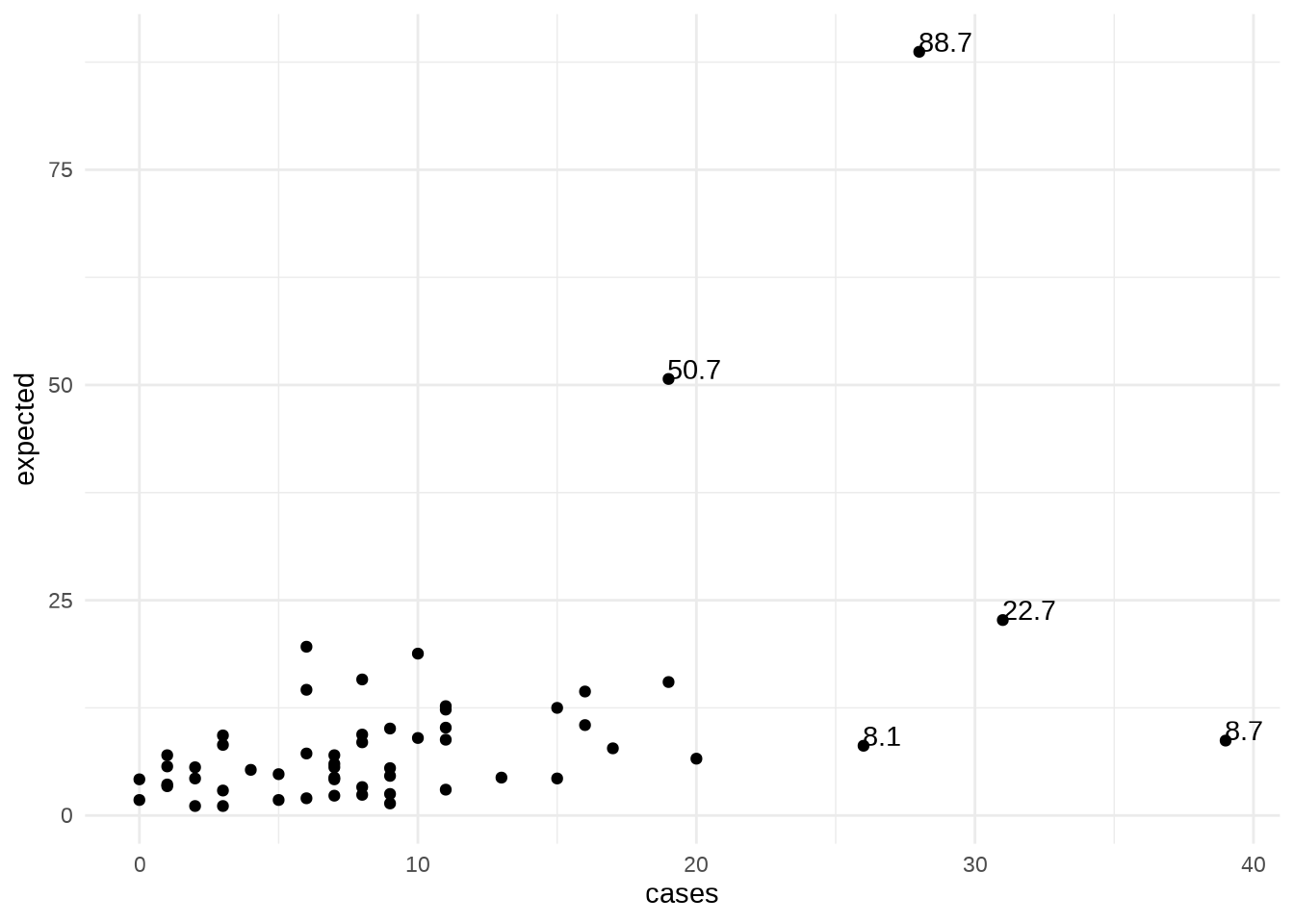13.4 Geoms
geoms stands for geometric objects for short. Some geoms requires both x and y while others not, as well as other require more than simply x and y, such as xmax, ymax etc.
If you do geom_ and tab all the available geoms appear in a list for you to choose from.
As an example here we use the geom_quantile() to represent a smoothed quantile regression and the geom_rug() for maginal rugs.
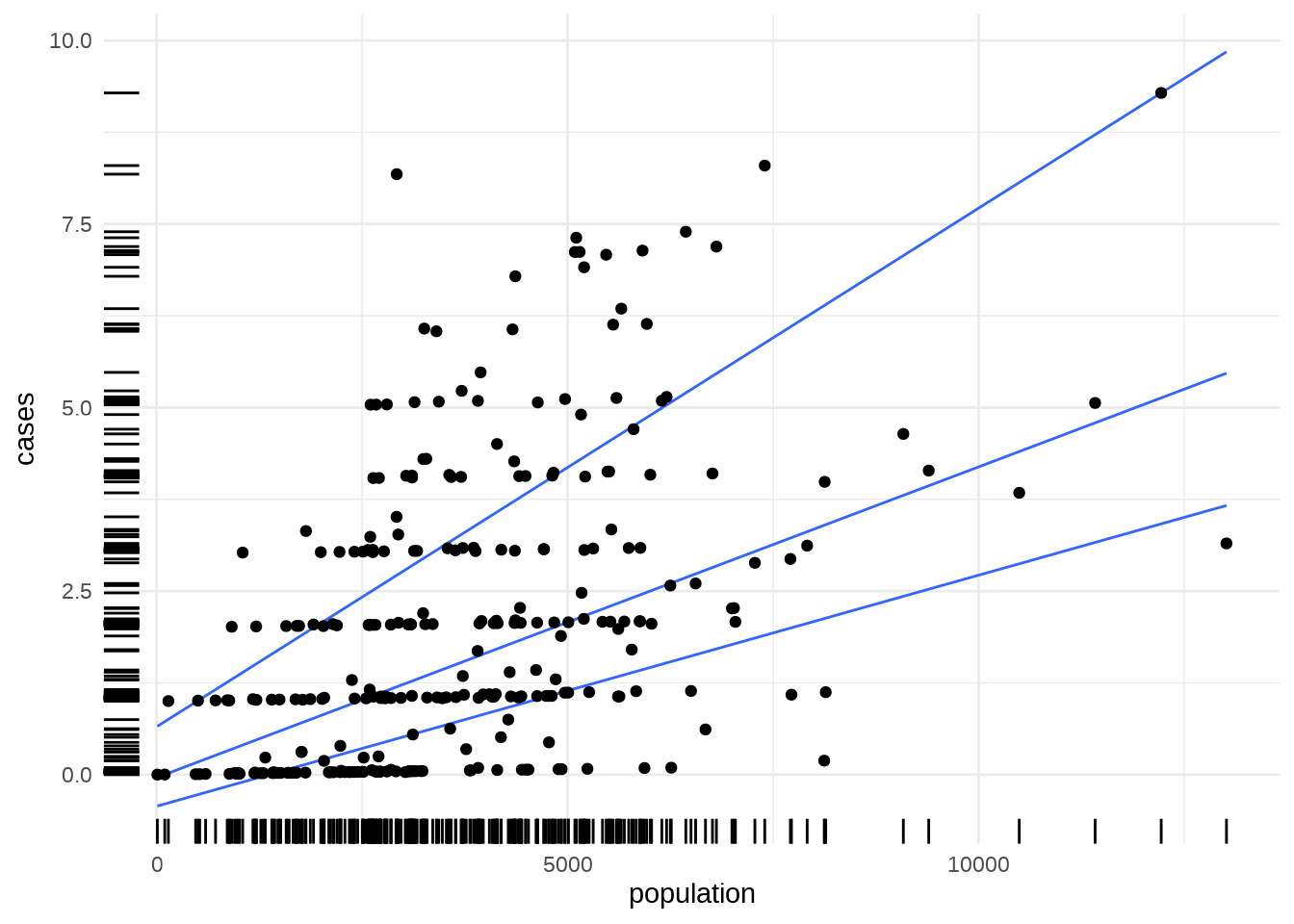
13.4.1 Exercises
The book suggests to download the cheatsheets: ggplot2 cheatsheet
(Ex.5) Display how a variable has changed over time: source
## # A tibble: 3 × 6
## date pce pop psavert uempmed unemploy
## <date> <dbl> <dbl> <dbl> <dbl> <dbl>
## 1 1967-07-01 507. 198712 12.6 4.5 2944
## 2 1967-08-01 510. 198911 12.6 4.7 2945
## 3 1967-09-01 516. 199113 11.9 4.6 2958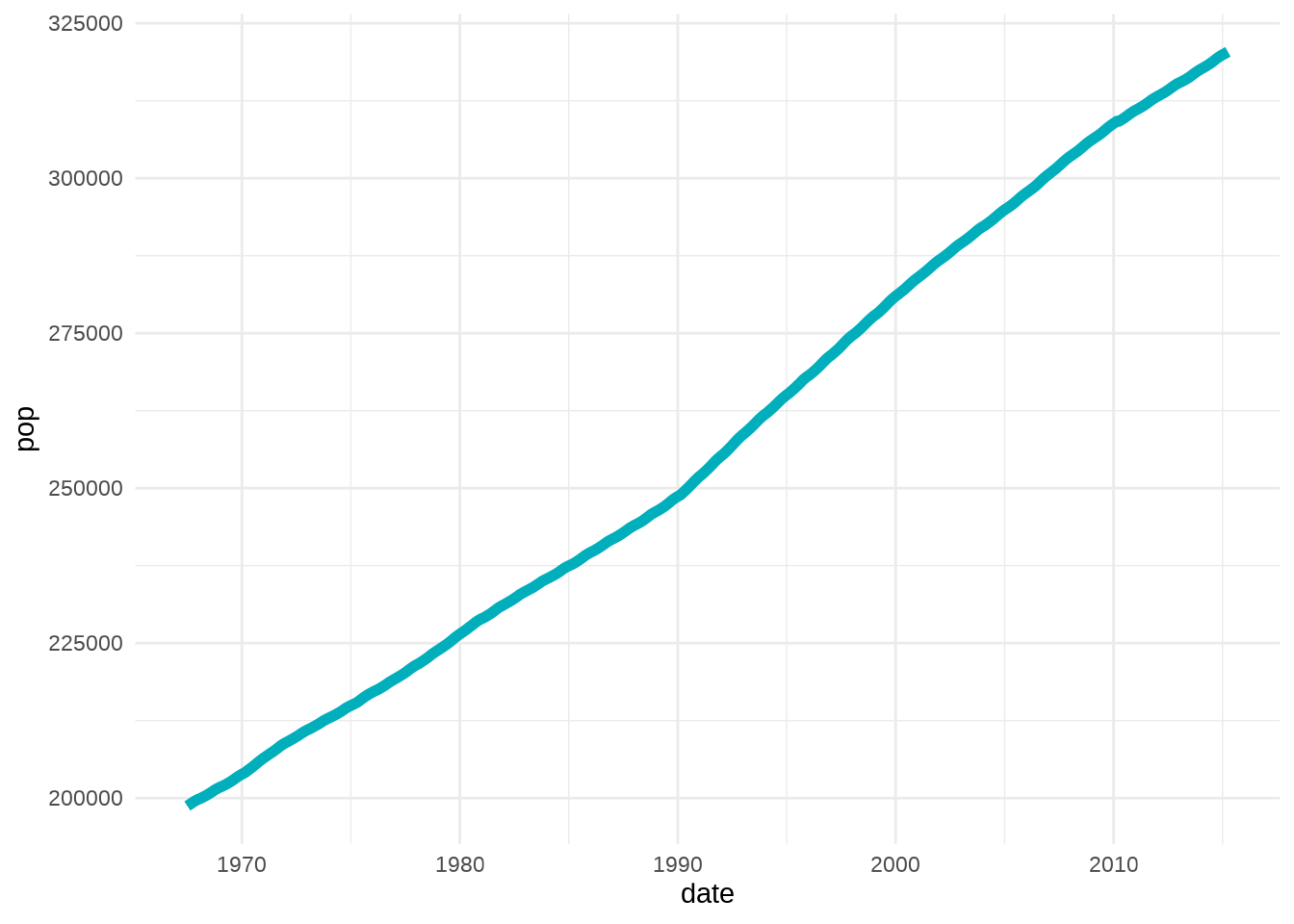
Show the detailed distribution of a single variable The distribution can be described using a frequency table and histogram.
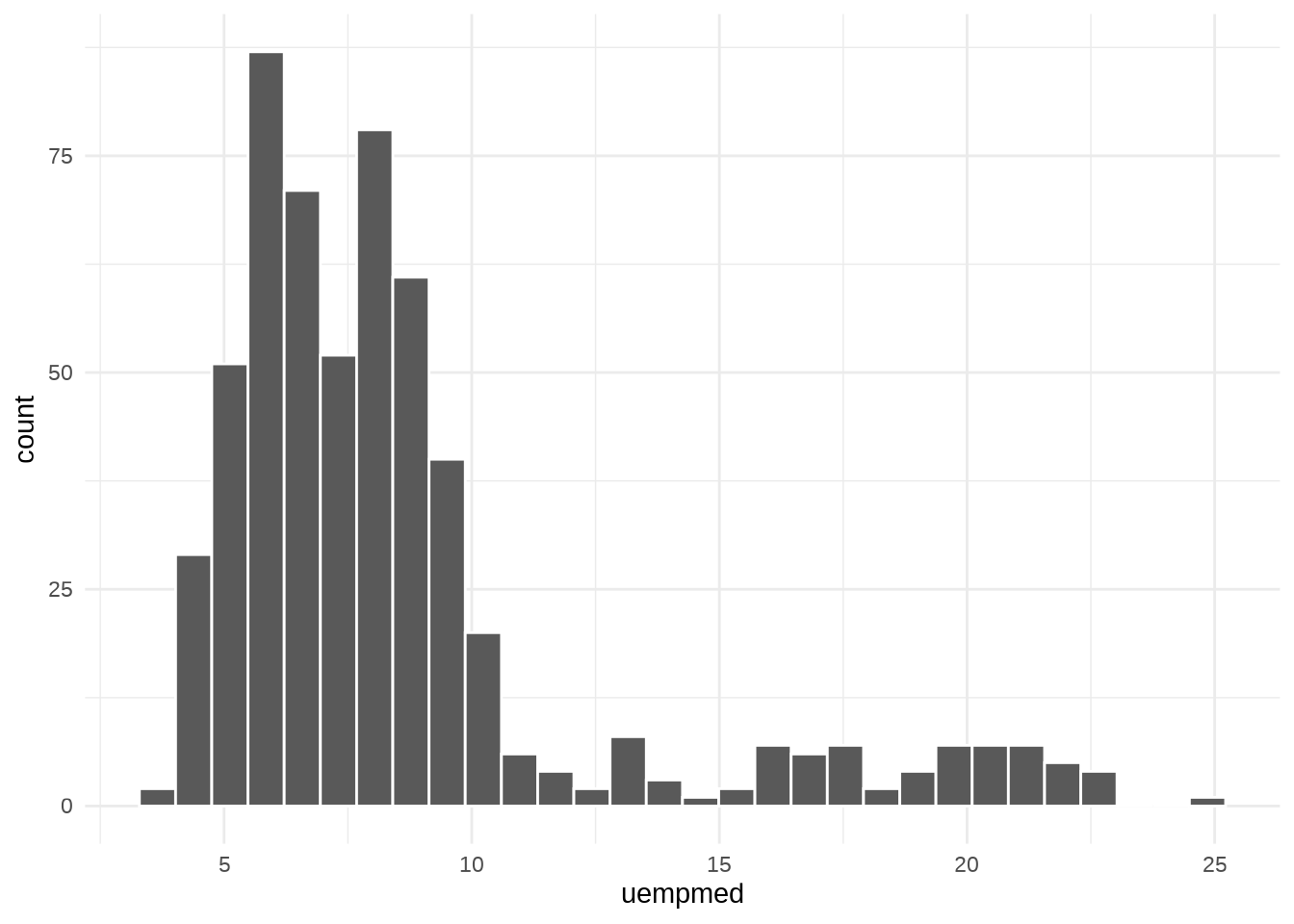
Focus attention on the overall trend in a large dataset
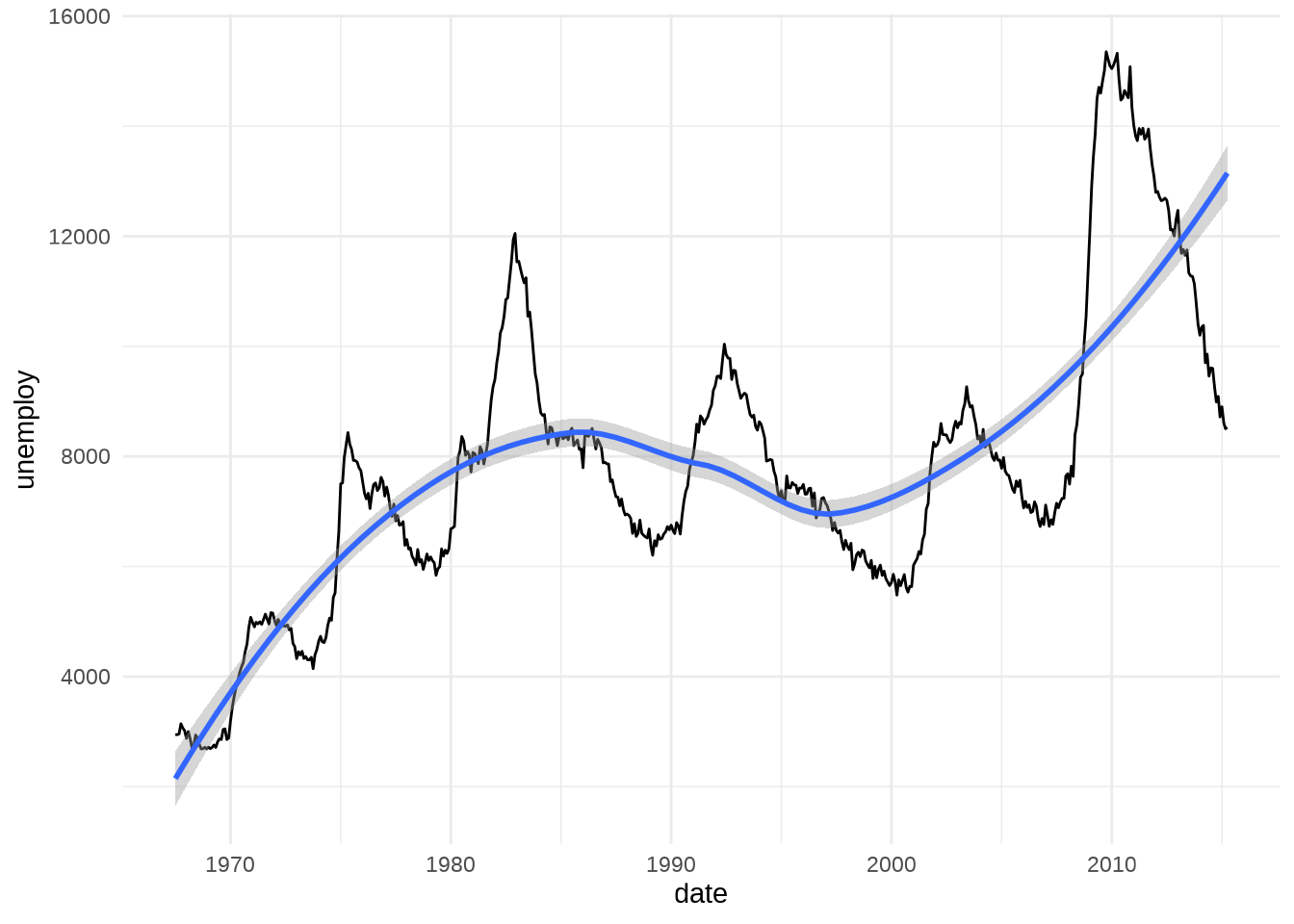
Draw a map
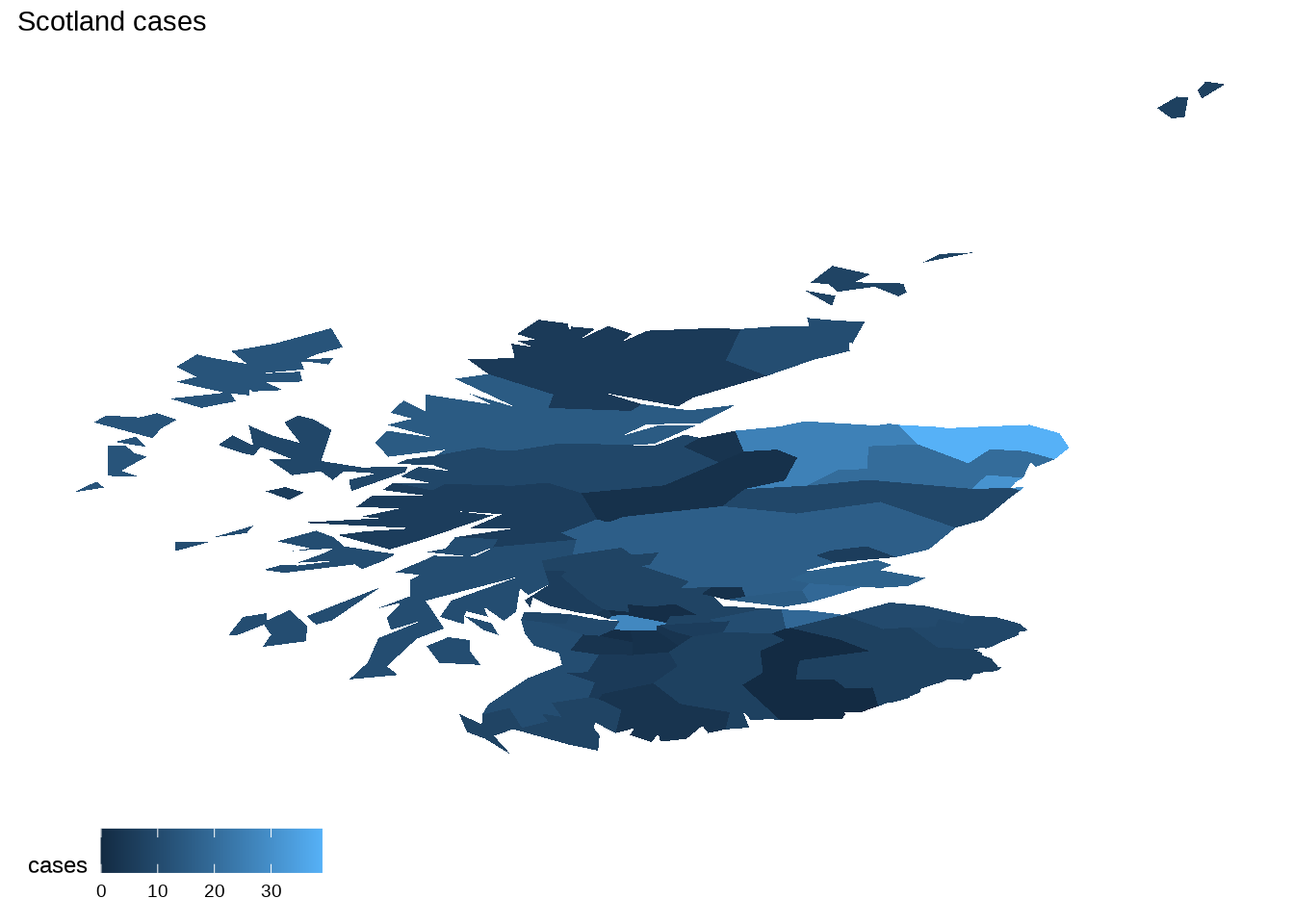
Label outlying points
